Green energy sources, renewable energy such as wind energy, solar energy and natural gas are soon being focused on development by a number of countries. Leading the trend, Denmark not only aims to become a carbon-free country by 2050, but also has developed renewable energy sources early, becoming the first country in the world to build large-scale offshore wind farms, according to which, this green energy source alone is enough to supply all the electricity needs of the people.
Denmark is proving that a fossil fuel-free future is possible, and they are taking steps to make it happen.
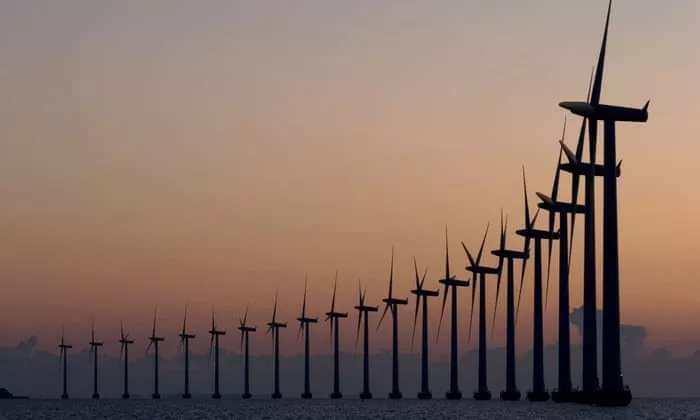 |
| Denmark's wind power supply is currently sufficient to meet the needs of its people. (Source: The Guardian). |
Faced with the urgent need for green energy, Vietnam has been promoting the development of renewable energy sources, including wind power.
Vietnam’s coastal areas from Binh Thuan, Ninh Thuan, Ben Tre and Tra Vinh are highly appreciated for their potential for wind power development, with several projects having been tested, deployed and put into operation. In addition, Vietnam has also begun to deploy offshore wind power projects, taking advantage of the strong winds in the East Sea.
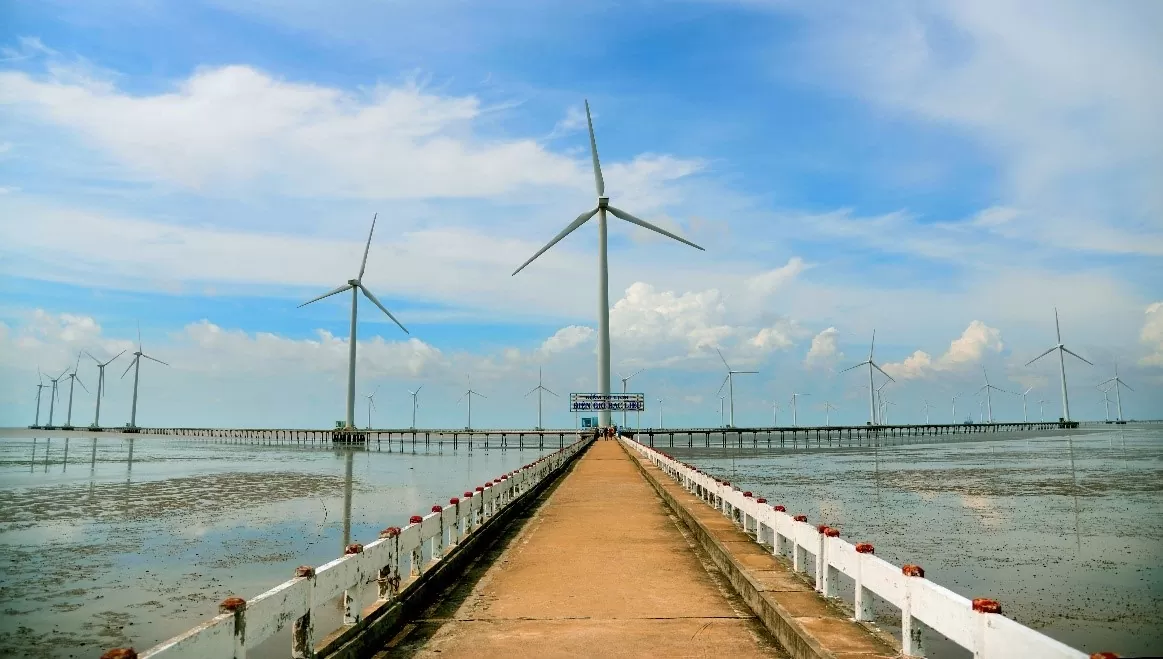 |
| Wind power field in Bac Lieu . (Source: icon.com.vn) |
The most important component of a wind power plant is the wind turbine, which determines the efficiency of exploitation, as well as the quality of the output power.
Wind turbines are currently developed in two basic lines, horizontal axis turbines (HAWT_ Horizontal Axis Wind Turbine ) and vertical axis turbines (VAWT_ Vertical Axis Wind Turbine ).
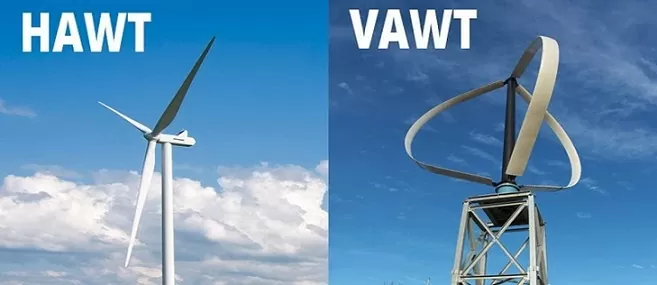 |
| Horizontal axis wind turbine and vertical axis wind turbine. (Source: solenvn.com) |
The main structure of HAWT consists of the propeller part attached to the rotating shaft and placed horizontally to the wind direction. HAWT uses the thrust of the wind to rotate the propeller blades and create power. Normally, to capture the most wind energy, HAWT are manufactured with long wingspans, so they need to be placed on tall, airy supports.
At heights of tens or even hundreds of meters, where the air flow is stable, HAWT can catch the wind easily, allowing the propeller blades to rotate faster and more evenly. And because all the blades of HAWT are affected by the wind at the same time, the power received is at a high level.
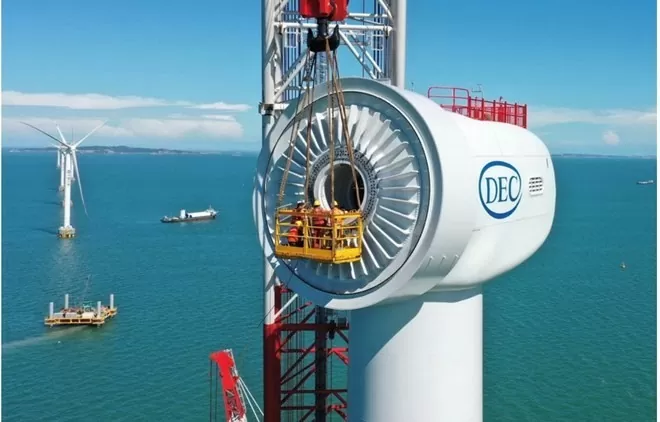 |
| Large-capacity offshore HAWT installation. (Source: Mingyang Smart Energy) |
For giant HAWT turbines installed offshore, the power generation capacity can reach tens of MW. Therefore, HAWT is a common type in current wind power plants.
However, due to the complex structure and large height, the installation and maintenance process is very difficult. In addition, the gearbox and generator system of HAWT is placed on a high tower, leading to poor stability. HAWT is only suitable for areas with relatively strong and stable winds, and they only operate effectively when the working surface of the blade is perpendicular to the wind direction.
On the other hand, because of the long wingspan, the speed at the tip of the HAWT wing is very large, causing noise when operating. Therefore, they are often installed in places far from residential areas or at sea.
Meanwhile, VAWT is designed to receive wind by rotating blades around a vertical axis, facilitating installation and taking advantage of wind from all directions. Unlike HAWT, VAWT has all working parts arranged at the base, close to the ground, so the balance stability is better due to the low center of gravity. This also makes maintenance and repair easier and less dangerous.
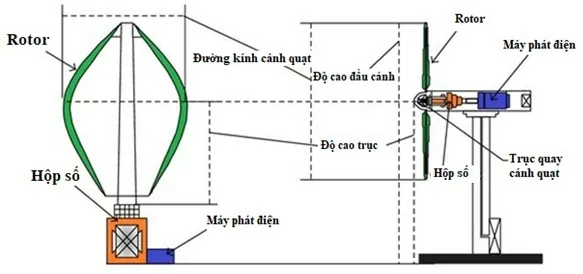 |
| Comparison between VAWT and HAWT. (Source: lucquan2.forumvi.com) |
Compared to HAWT, the operating noise of VAWT is also much lower, allowing VAWT to be installed anywhere, such as in urban areas, households, roofs of high-rise buildings... the power generation capacity can reach from a few kW to several hundred kW.
VAWT also has limitations. Because there is only one blade facing the wind at a time and the force acting on all the blades is not uniform, it creates vibrations, which can easily cause the thrust bearing to be destroyed. Also because the blades are acting in opposite directions, it affects the number of revolutions and the ability to create torque of the turbine.
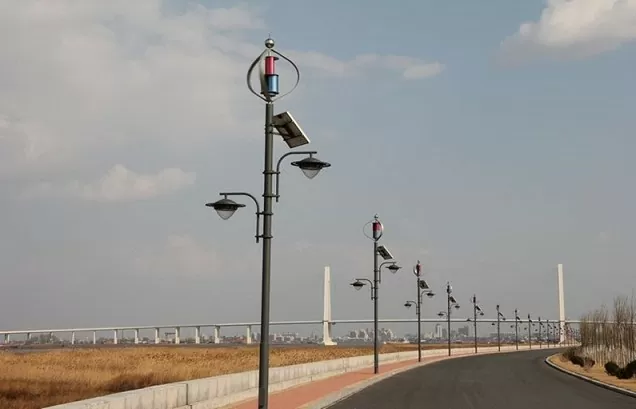 |
| VAWTs are integrated on street lamp poles. (Source: Dingxin) |
In some parts of the world, VAWT has been put into operation in urban areas, industrial zones, rural areas, coastal areas and small-scale applications in locations where wind speed and direction frequently change and the advantage is that it does not require large spaces.
In Vietnam, VAWT has not been widely exploited. The main reason is that the efficiency of this type of turbine is still low, the economic efficiency is not high. Recently, there have been a number of studies and proposed solutions, including very promising experimental research results on the model of the Research Group of the University of Water Resources.
We hope that in the near future, the VAWT “puzzle piece” will contribute to developing green energy sources for the country, preserving the living environment for all of us.




![[Photo] "Exposing letters" in the flood center of Lang Son](https://vphoto.vietnam.vn/thumb/1200x675/vietnam/resource/IMAGE/2025/10/10/1760080117518_ndo_br_z7101324112737-07cd4d1c01801a8ccf4ae0cbaf31c4a3-507-jpg.webp)

![[Photo] Prime Minister Pham Minh Chinh attends the Patriotic Emulation Congress of Hanoi city](https://vphoto.vietnam.vn/thumb/1200x675/vietnam/resource/IMAGE/2025/10/10/1760078918257_dsc-2008-jpg.webp)
![[Photo] Standing member of the Secretariat Tran Cam Tu works with the Standing Committee of the Party Committee of the Ministry of Health](https://vphoto.vietnam.vn/thumb/1200x675/vietnam/resource/IMAGE/2025/10/10/1760079818773_image-4-6972-jpg.webp)
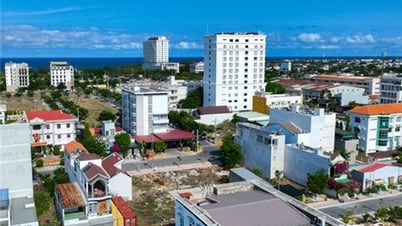


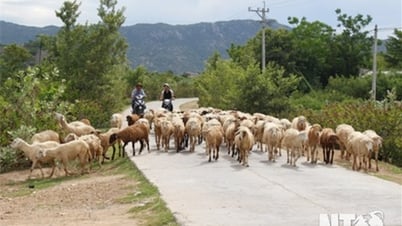














































![[Photo] President Luong Cuong presents decisions on conferring titles and appointing Vietnamese Ambassadors](https://vphoto.vietnam.vn/thumb/402x226/vietnam/resource/IMAGE/2025/10/10/1760082105623_image-1.jpeg)












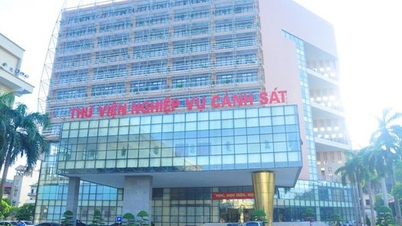



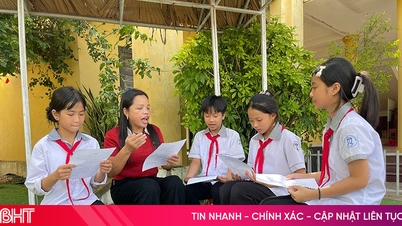






















Comment (0)